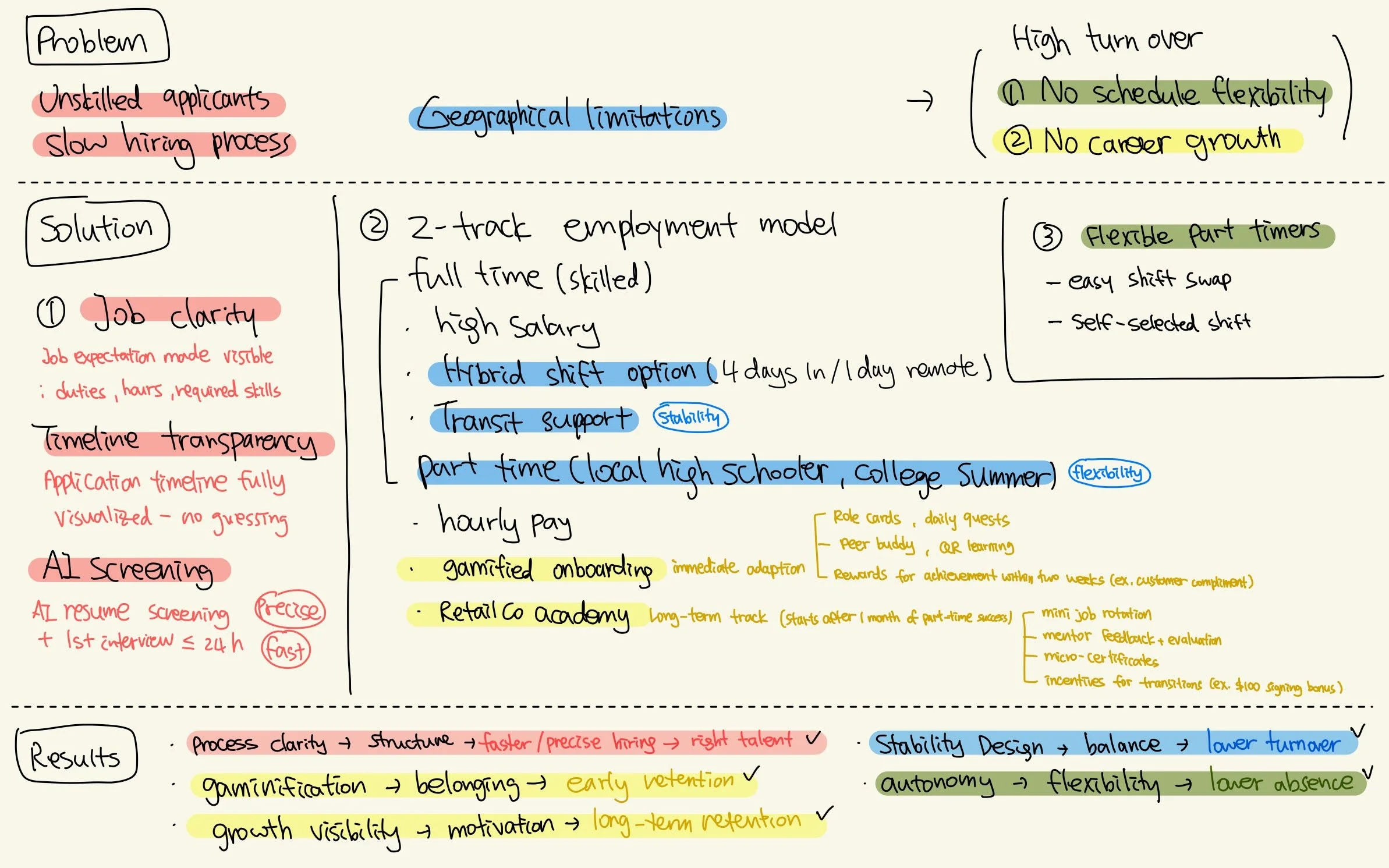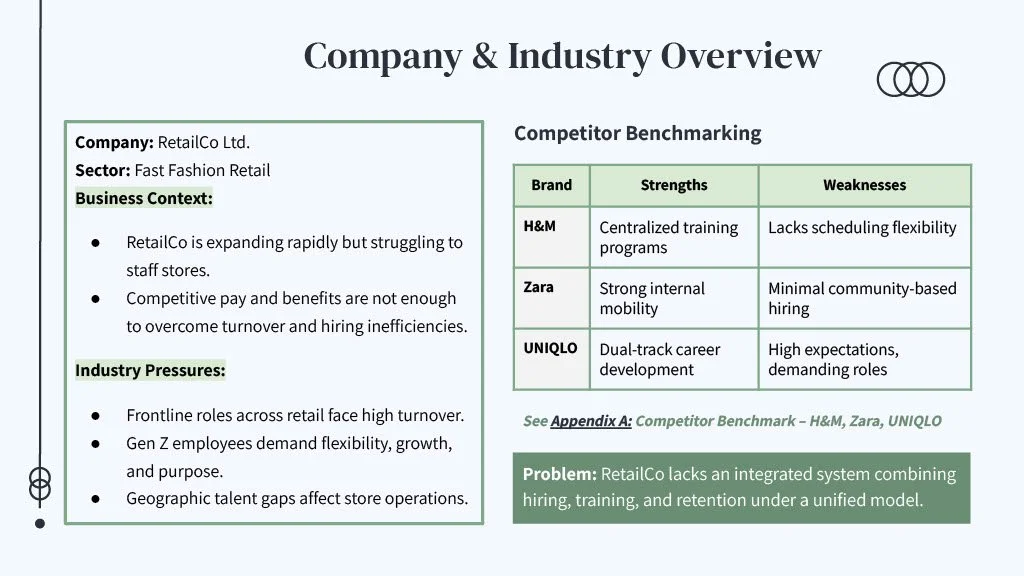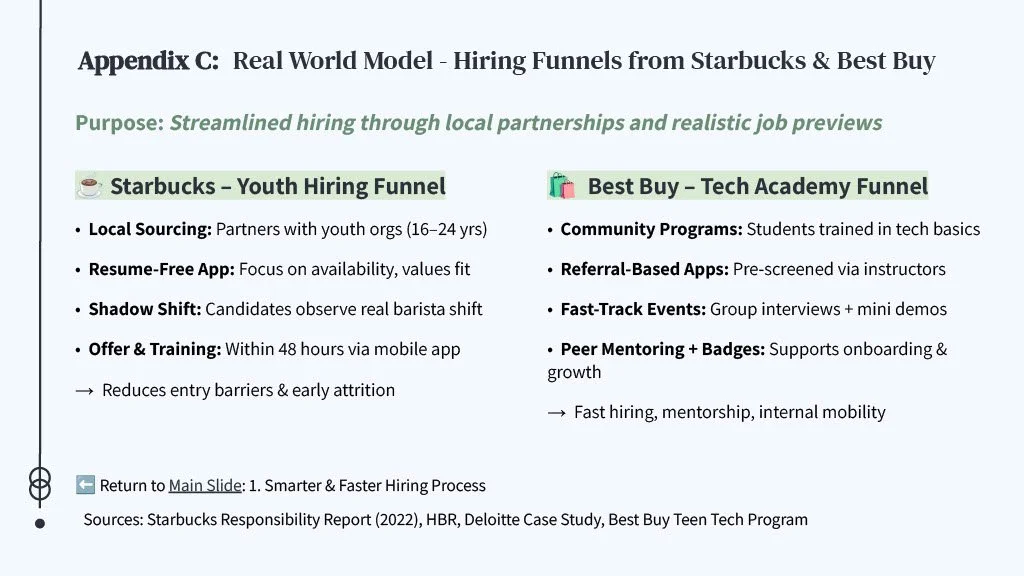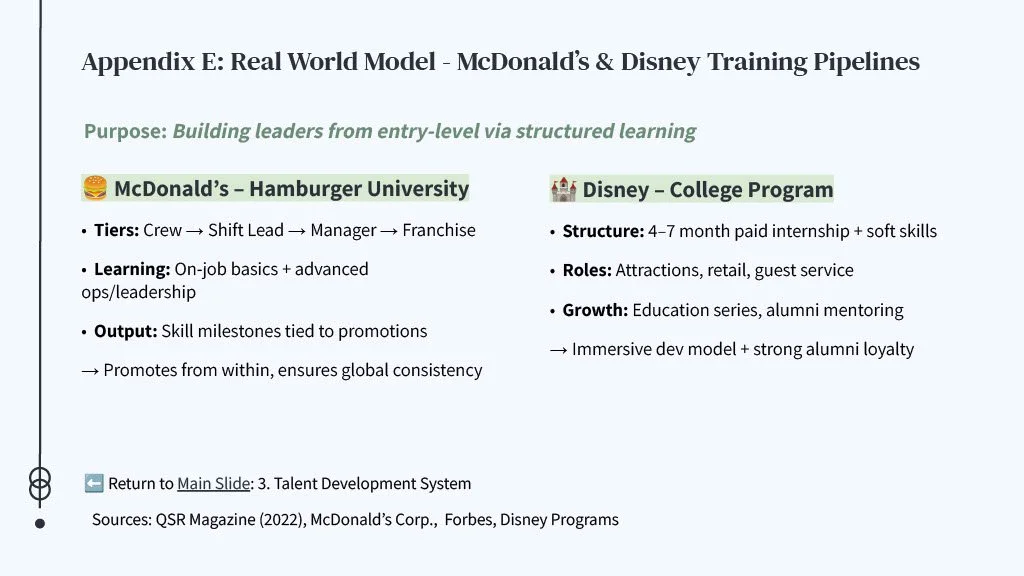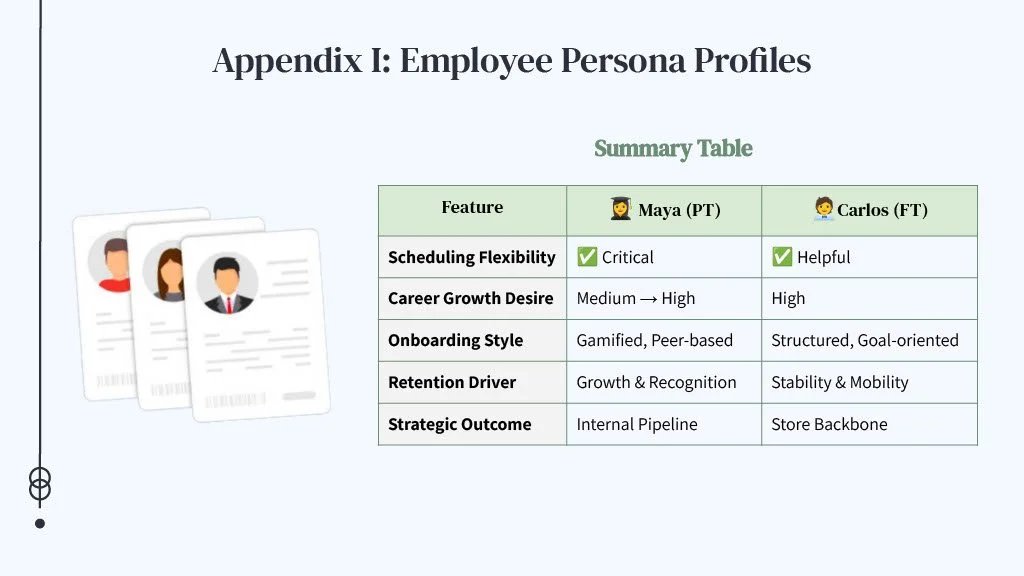SHRM: Rebuilding Talent Strategy from the Ground Up
Handwritten note from early ideation
The Challenge
RetailCo, a fast-growing retail conglomerate, was facing a talent crisis—marked by severe turnover and slow, inefficient hiring. At its core, it wasn’t just an operational issue but a human mismatch.
The rigid scheduling and lack of career visibility in traditional retail models failed to meet the modern needs of Gen Z employees—who value flexibility, growth, and autonomy.
Our task was to design a comprehensive People Plan to rebuild stability, streamline hiring, and restore meaning to frontline work.
Core/Behavioral Insights
Our strategy centered on a simple but powerful truth: people stay where they feel progress and choice.
Turnover wasn’t only about pay—it stemmed from a lack of psychological ownership and clear developmental paths.
Behavioral Lever (Gamification):
Traditional, monotonous onboarding often drives early exits.
By reimagining onboarding as a game-like experience—with role cards, daily quests, and progress milestones—we could boost competence and belonging, reducing ramp-up time while building long-term loyalty.
Strategic Motivation (Autonomy):
We leaned on the idea that “freedom boosts retention.”
Introducing self-scheduling apps and flexible pilot options gave employees control over their time—directly addressing Gen Z’s need for autonomy and minimizing burnout and absenteeism.
Actionable Solution & Impact
We proposed a 4-Part Strategic Framework, reimagining frontline jobs as structured, growth-oriented pipelines—and this approach earned us 1st place in the competition.
Strategic Structure:
Designed a Dual-Track Employment Model balancing long-term Full-Timers with flexible Part-Timers.
This provided consistency while opening clear pathways from Part-Time to Pipeline for advancement.
UX / Tech Implementation:
Integrated AI screening tools (like HireVue) to cut time-to-hire to under one week, while implementing gamified onboarding to help new hires become productive—and proud—faster.
Quantified Impact:
The plan required an initial investment of $750K, yet was forecasted to yield $1.6M+ in annual savings by reducing churn costs and increasing retention.
My Comment
This project taught me that HR strategy is, at its core, UX strategy. We weren’t just solving a hiring issue—we were solving a human experience problem. Every step was about reframing the employee’s journey: from feeling replaceable to feeling valued, from routine work to personal growth. It was deeply validating to see how behavioral design and empathy-driven systems could transform a business challenge into a $1.6M ROI forecast, proving that the best solutions come from understanding people first.
